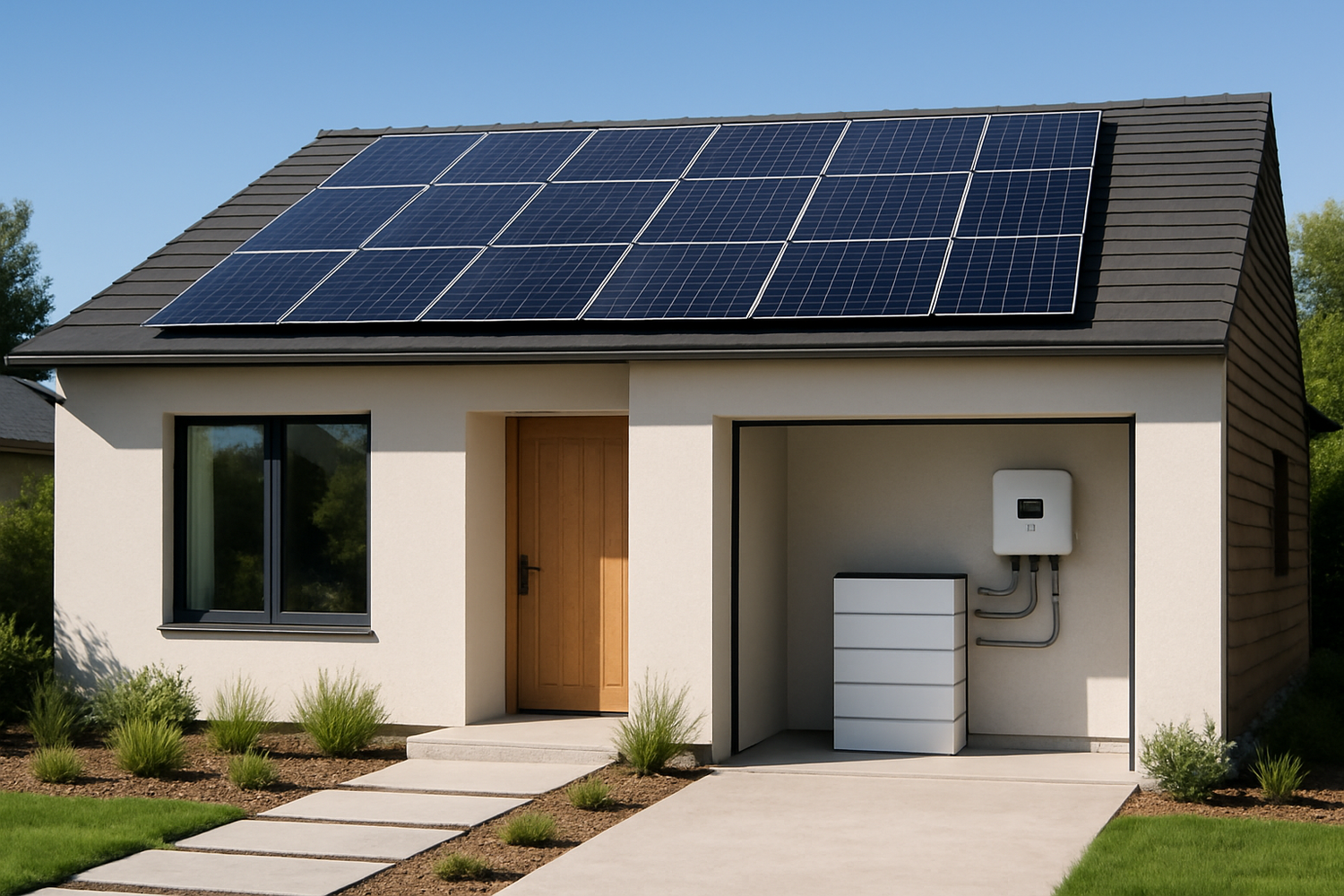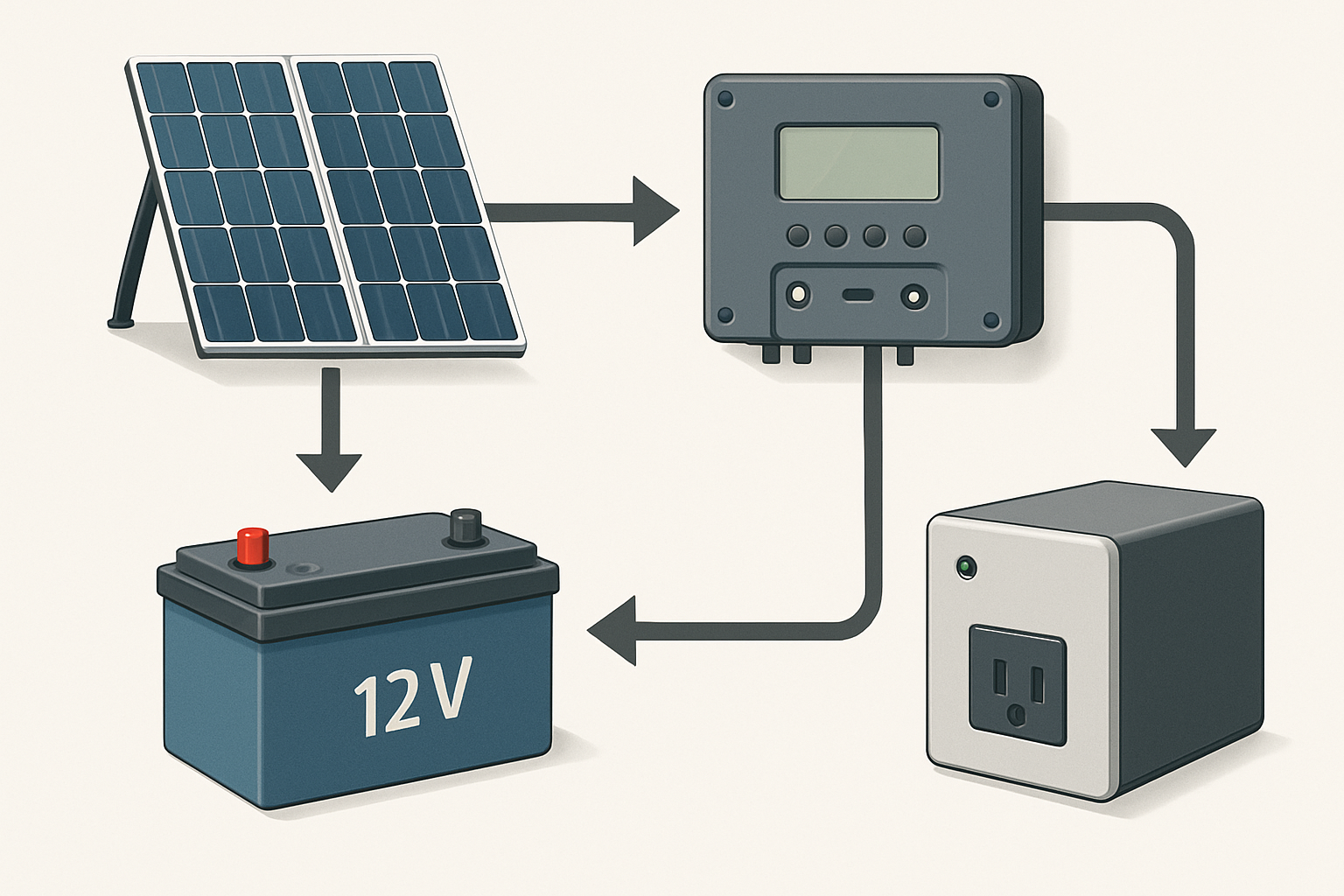The idea of energy independence is appealing. Generating your own power, free from utility bills and grid instability, is a powerful motivator for many. Off-grid solar power systems make this possible. Yet, a number of misconceptions prevent people from considering this practical solution. It is time to separate the myths from the reality to present a clear picture of what a modern off-grid solar system can offer.
Myth 1: Off-Grid Solar is Unreliable, Especially on Cloudy Days
One of the most persistent solar power misconceptions is that you will lose power the moment clouds appear. This idea overlooks the central component of any off-grid system: energy storage.
The Reality of Consistent Power
Modern off-grid systems are designed for consistency. High-performance solar panels generate substantial electricity even in overcast conditions, often producing 10-25% of their rated output. This energy is stored in a home battery storage system. Advanced batteries, particularly Lithium Iron Phosphate (LiFePO4) models, store excess power generated during sunny periods. This stored energy is then used to power your home at night, during cloudy spells, or any time your demand exceeds solar generation. A properly sized battery bank can provide days of power without any sunshine, ensuring uninterrupted electricity.
Technology That Ensures Stability
The reliability of an off-grid system comes from the seamless integration of its components. A solar inverter converts the direct current (DC) electricity from panels and batteries into the alternating current (AC) that powers your appliances. Meanwhile, a sophisticated Battery Management System (BMS) protects the battery, optimizing its performance and lifespan. This combination provides a stable and reliable power source, regardless of the weather.
Myth 2: Off-Grid Solar Systems are Prohibitively Expensive
The upfront cost of an off-grid solar system is a significant consideration, but framing it solely as an expense is misleading. It is an investment in long-term energy security and financial predictability.
A Look at the Long-Term Investment
While the initial purchase requires capital, it eliminates monthly electricity bills for the life of the system. Over 25 years or more, the savings can far outweigh the initial cost. According to the International Energy Agency (IEA), the cost of solar PV technology has fallen dramatically, making it the 'cheapest electricity in history'. Additionally, government incentives, such as the Residential Clean Energy Credit in the United States, can significantly reduce the net cost of installation by offering a substantial tax credit. When you compare this to the unpredictable and often rising costs of grid electricity, the financial case for off-grid solar becomes much stronger.
Calculating the True Value
The true value of an off-grid system is measured in its total cost of ownership. High-quality components are built to last. Solar panels typically have a performance warranty of 25-30 years, and LiFePO4 batteries can endure thousands of charge cycles, offering a lifespan of 10-15 years. To better grasp these financial benefits, it is helpful to understand key performance metrics. A detailed examination of factors like battery cycle life, depth of discharge (DoD), and system efficiency provides a clearer picture of long-term value. For an in-depth analysis, you can review this ultimate reference on solar storage performance.
| Cost Factor | Off-Grid Solar System | Utility Grid Power |
|---|---|---|
| Initial Installation | $25,000 | $0 |
| Monthly Bill | $0 | $150 (average, increasing 3% annually) |
| Major Maintenance (e.g., Battery Replacement) | $5,000 (Year 15) | $0 |
| Total 25-Year Cost | $30,000 | ~$65,400 |
Disclaimer: This table provides an illustrative example. Actual costs and savings will vary based on location, system size, energy consumption, and local utility rates. This is not financial advice.
Myth 3: Maintaining an Off-Grid System is Complicated
The idea of personally managing a power plant can seem daunting. However, the reality is that modern off-grid solar systems are designed for reliability and require minimal user intervention.
The Simplicity of Modern Systems
Solar panels are durable and have no moving parts. Their primary maintenance requirement is occasional cleaning to remove dust, leaves, or snow that might obstruct sunlight. The electronic components, such as the inverter and charge controller, are largely self-managing. A quality LiFePO4 battery with an integrated BMS automatically handles charging and discharging to maximize its lifespan without requiring any manual adjustments.
Routine Checks You Can Handle
System maintenance is more about periodic inspection than intensive labor. Simple tasks include visually checking that panels are clean and undamaged, ensuring wiring connections are secure, and monitoring system performance through a user-friendly app or display. These checks are infrequent and straightforward, ensuring the system operates efficiently for years.
A Clearer View of Energy Independence
Separating myths from reality reveals that off-grid solar power is a mature, reliable, and financially sound technology. Modern systems deliver consistent power day and night, thanks to advanced energy storage solutions like LiFePO4 batteries. While the initial investment is real, it pays dividends through decades of eliminated electricity bills and energy autonomy. With minimal maintenance and the ability to scale for any energy need, achieving true energy independence is more accessible than ever.
Frequently Asked Questions
What happens during a week of cloudy weather?
An off-grid solar system is designed with energy autonomy in mind. The battery bank is sized to store enough energy to power your home through several days of low solar generation. For locations with extended periods of inclement weather, a backup generator can be integrated into the system to recharge the batteries if needed, ensuring continuous power.
How long do off-grid solar components last?
Component longevity is a key strength of modern solar systems. Solar panels typically have a lifespan of 25 to 30 years or more. High-quality solar inverters last 10 to 15 years. LiFePO4 batteries, a leading choice for energy storage, are designed to last for 10-15 years or between 4,000 and 6,000 charge cycles, significantly longer than traditional lead-acid batteries.
Is an off-grid system scalable if my energy needs grow?
Yes, most off-grid solar systems are modular and designed for scalability. You can expand your system's capacity by adding more solar panels to increase power generation or by connecting additional batteries, such as a 12V 100Ah lithium-ion battery, in parallel to increase your energy storage. It is wise to plan for potential future growth during the initial design phase.





Leave a comment
All comments are moderated before being published.
This site is protected by hCaptcha and the hCaptcha Privacy Policy and Terms of Service apply.